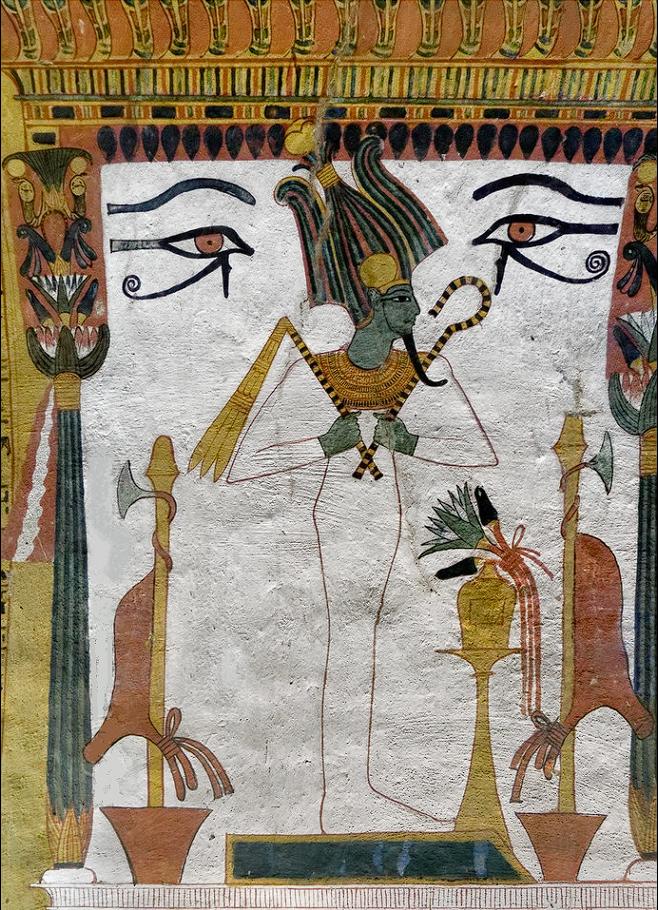Osiris and the Eternal Cycle of Life: A Mural of Resurrection in Sennedjem’s Tomb
In the heart of the Deir el-Medina cemetery near Luxor, one of the most captivating murals from Egypt’s 19th Dynasty adorns the northern wall of the tomb of Sennedjem, a skilled carpenter and architect. This mural, a masterpiece of ancient Egyptian art, immortalizes the god Osiris, symbolizing the ever-present hope of renewal and rebirth.
The Green Face of Osiris: A Symbol of Life and Rebirth
The image of Osiris, painted with his iconic green face, immediately evokes the themes of resurrection. Green, a color associated with the fertility of the land and life’s regeneration, is crucial to understanding the deeper meaning behind this divine portrayal. Osiris stands proudly in a kiosk, crowned with the atef crown, its striped white and red pattern symbolizing the unification of Upper and Lower Egypt.
Above his head, a yellow sun disk shines brightly, reinforcing the sun’s vital role in the cycle of life, death, and renewal. Osiris, the god of the afterlife, life, and resurrection, is the very embodiment of this eternal cycle.
The Hieroglyph of Truth: Maat and Divine Justice
Osiris is not just a figure of resurrection, but a symbol of truth. Beneath his feet, the hieroglyph for maat — the ancient Egyptian concept of truth, balance, and cosmic order — reinforces his role as the judge of the dead and the custodian of divine justice. Maat was seen as the guiding principle of the universe, and through Osiris, the mural connects death to an orderly, harmonious rebirth.
Anubis, Rejuvenation, and the Power of Resurrection
The mural’s symbolism doesn’t stop with Osiris. The surrounding elements add layers to the theme of life’s renewal. The imiut fetishes, associated with Anubis, the god of embalming and the afterlife, are prominently featured. These fetishes represent the rituals of mummification and the hope for rejuvenation beyond death. Anubis, closely connected with the preservation of life after death, echoes Osiris’s themes, further solidifying the idea of eternal renewal.
Floral columns, rich with intricate details, echo the earthly connection to rebirth. These columns mirror the vegetal motifs on Osiris’s skin, reinforcing the idea that life is cyclical, constantly reborn like the plants that grow with the sun.
Sennedjem’s Legacy: The Carpenter Who Immortalized Resurrection
Sennedjem, who likely played a significant role as an architect, left behind a testament to his craft in this beautifully decorated tomb. The mural in his tomb stands as a powerful declaration of his beliefs, blending his technical skill with profound spiritual symbolism. The eternal themes of resurrection and renewal — deeply rooted in ancient Egyptian culture — are enshrined in this mural, ensuring that Sennedjem’s legacy lives on.

CÁC TIN KHÁC
Mary Walton: The Forgotten Inventor Who Helped Clean Up America’s Cities
Tomb of Queen Nefertari in the Valley of the Queens, Egypt
Discover the Hypostyle Hall of the Temple of Hathor at Dendera
Venus de Losange: Unveiling the Mystery of a 20,000-Year-Old Paleolithic Icon